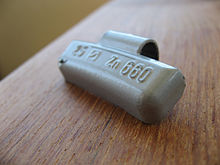Wheel alignment and Wheel Balancing are two totally different things, but many people often get them confused. Here we describing both these terms and why each one has its own importance.
Wheel Alignment
Wheel alignment consists of adjusting the angles of wheels to the car manufacturer specifications. The purpose of these adjustments is to reduce tire wear and to ensure that vehicle travel is straight and true (without “pulling” to one side0. Alignment angles can also be altered beyond the maker’s specifications to obtain a specific handling characteristic. Motorsport and off-road applications may call for angles to be adjusted well beyond “normal”, for a variety of reasons. Wheel alignment can be done by following these three norms.
- Primary angles: The primary angles are the basic angle alignment of the wheels relative to each other and to the car body
- Secondary angles: The secondary angles include numerous other adjustments, such as: SAI (Steering Axis Inclination) (left & right), Included angle (left & right), Toe out on turns
 (left & right), Maximum Turns (left & right), Toe curve change (left & right), Track width difference, Wheelbase difference, Front ride height (left & right), Rear ride height (left & right), Frame angle Setback (front & rear)
(left & right), Maximum Turns (left & right), Toe curve change (left & right), Track width difference, Wheelbase difference, Front ride height (left & right), Rear ride height (left & right), Frame angle Setback (front & rear)- Measurement: A camera unit (sometimes called a “head”) is attached to a specially designed clamp which holds on to a wheel. There are usually four camera units in a wheel alignment system (a camera unit for each wheel). The camera units communicate their physical positioning with respect to other camera units to a central computer which calculates and displays.
Wheel/Tire Balencing
while Tire balance or wheel balence, also referred to as tire unbalance or imbalance, describes the distribution of mass within an automobile tire or the entire wheel (including the rim) to which it is attached.
When the wheel rotates, asymmetries of mass may cause it to hop or wobble, which can cause ride disturbances, usually vertical and lateral vibrations. It can also result in a wobbling of the steering wheel or of the
 entire vehicle. The ride disturbance, due to unbalance, usually increases with speed. Vehicle suspensions can become excited by unbalance forces when the speed of the wheel reaches a point that its rotating frequency equals the suspension’s resonant frequency.
entire vehicle. The ride disturbance, due to unbalance, usually increases with speed. Vehicle suspensions can become excited by unbalance forces when the speed of the wheel reaches a point that its rotating frequency equals the suspension’s resonant frequency.
Tires are balanced in factories and repair shops by two methods: static balancers and dynamic balancers. Tires with high unbalance forces are downgraded or rejected. When tires are fitted to wheels at the point of sale, they are measured again on a balancing machine, and correction weights are applied to counteract the combined effect of the tire and wheel unbalance. After sale, tires may be rebalanced if driver perceives excessive vibration. Balancing is not to be confused with wheel alignment.



One thought on “Wheel alignment and Wheel Balancing”
I recently buy a Audi car. As this is my first car i am totally ignorant that the two things wheel balancing and wheel alignments are two different things. Thanks for posting this informative blog, it is helpful for new car drivers and owners. The difference between wheel alignment and wheel tire balancing is- Wheel alignment is the process of adjusting the angles of wheels according to car manufacturer specifications. The main advantage of these adjustments is to reduce tire wear and to ensure that vehicle travel is straight and true and its not get pulled to one side. Wheres as wheel tire balance is mainly refereed to as tire unbalance or imbalance, describes the distribution of mass within an automobile tire or the entire wheel which it is attached. For any type of queries you can contact https://solomotorsports.net/contact/.